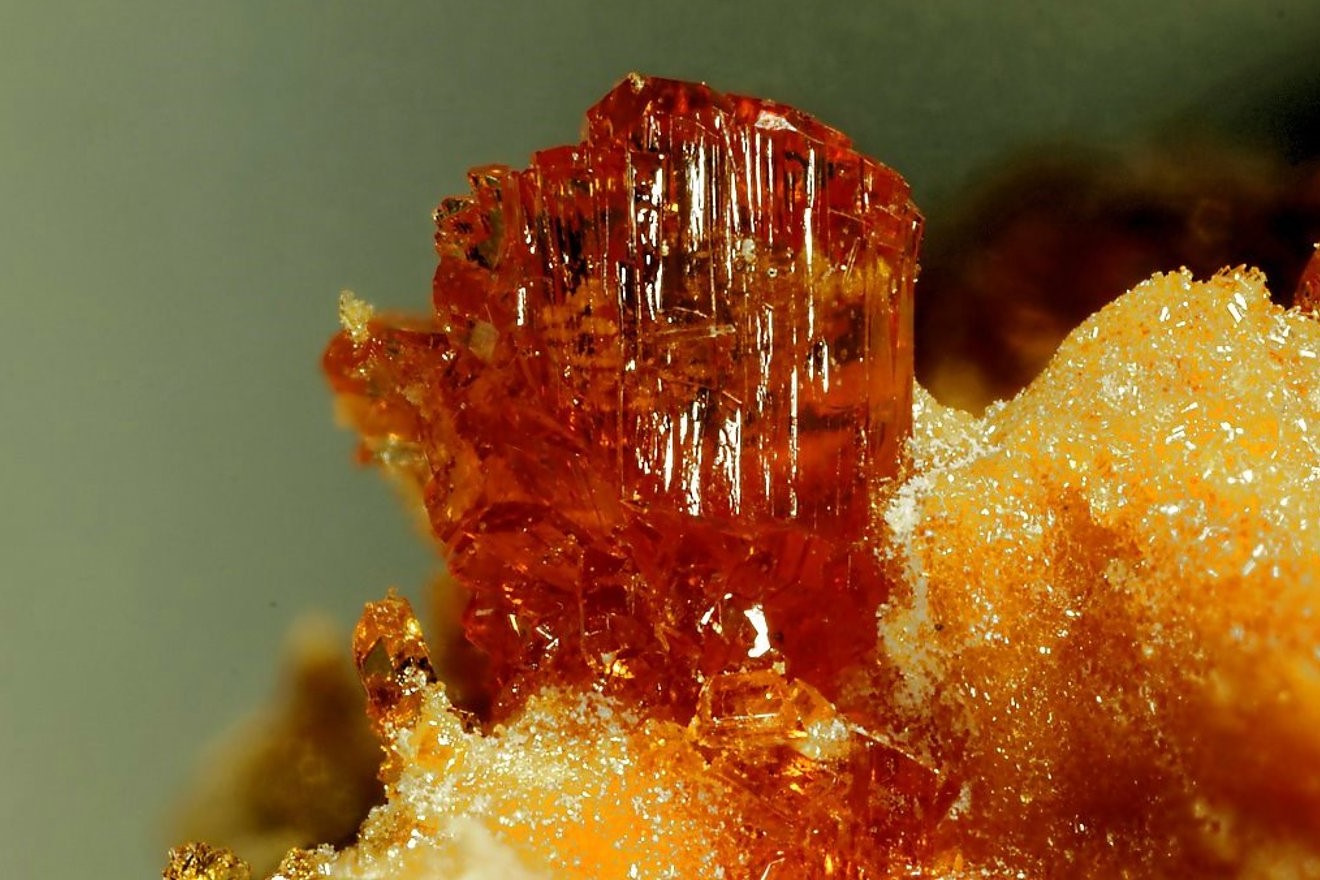
What is Botryogen? Botryogen is a rare mineral known for its striking red to yellow hues. This mineral, composed of hydrated magnesium iron sulfate, often forms in arid regions where it crystallizes in botryoidal (grape-like) clusters. Why is Botryogen important? Its unique formation process and vibrant colors make it a subject of interest for geologists and mineral collectors alike. Where can you find Botryogen? Notable locations include the Atacama Desert in Chile and various mines in the United States. How does Botryogen form? It typically forms through the oxidation of iron sulfides in the presence of magnesium-rich solutions. What makes Botryogen unique? Its rarity and distinctive appearance set it apart from other minerals, making it a prized specimen in collections.
Key Takeaways:
- Botryogen is a colorful and unique mineral with a grape-like appearance, forming in arid environments. It's prized by collectors and used in education, but its solubility in water presents preservation challenges.
- Found in deserts and sulfide deposits, botryogen's bright colors and crystal formations make it a fascinating subject for study. However, its solubility in water and similarity to other minerals pose challenges for researchers.
What is Botryogen?
Botryogen is a fascinating mineral with a unique appearance and intriguing properties. It is a sulfate mineral that often forms in arid environments. Let's dive into some interesting facts about this mineral.
-
Botryogen gets its name from the Greek words "botrys" (bunch of grapes) and "genes" (born), due to its grape-like clusters.
-
This mineral typically appears in bright red, orange, or yellow colors, making it quite eye-catching.
-
Botryogen has a vitreous to resinous luster, giving it a shiny, glass-like appearance.
-
It forms in the monoclinic crystal system, which means its crystals are shaped like skewed rectangles.
-
The mineral is often found in oxidized zones of sulfide deposits, where it forms as a secondary mineral.
Chemical Composition and Structure
Understanding the chemical makeup of botryogen helps explain its properties and formation. Here are some key points about its composition and structure.
-
Botryogen's chemical formula is MgFe3+(SO4)2(OH)·7H2O, indicating it contains magnesium, iron, sulfate, hydroxide, and water.
-
The presence of iron gives botryogen its distinctive red and orange hues.
-
It is a hydrated mineral, meaning it contains water molecules within its structure.
-
The mineral's structure includes sulfate tetrahedra and hydroxide groups, which contribute to its stability.
-
Botryogen is part of the halotrichite group, a family of sulfate minerals with similar properties.
Formation and Occurrence
Botryogen forms under specific conditions and can be found in various locations around the world. Here are some facts about its formation and occurrence.
-
This mineral typically forms in arid, desert-like environments where evaporation rates are high.
-
It is often associated with other sulfate minerals like gypsum and epsomite.
-
Botryogen can be found in the oxidized zones of sulfide deposits, where it forms as a secondary mineral.
-
Notable locations for botryogen include the Atacama Desert in Chile, the Lavrion District in Greece, and the Harz Mountains in Germany.
-
The mineral can also form in mine dumps and other man-made environments where sulfide minerals are exposed to the elements.
Physical Properties
Botryogen's physical properties make it an interesting subject for study and collection. Here are some key characteristics.
-
The mineral has a Mohs hardness of 2 to 2.5, making it relatively soft and easy to scratch.
-
It has a specific gravity of 2.0 to 2.1, which means it is relatively light for a mineral.
-
Botryogen is soluble in water, which means it can dissolve when exposed to moisture.
-
The mineral often forms botryoidal (grape-like) aggregates, which are clusters of rounded crystals.
-
It can also form fibrous or acicular (needle-like) crystals, adding to its variety of appearances.
Uses and Applications
While botryogen is not a widely used mineral, it has some interesting applications and uses. Here are a few examples.
-
Botryogen is primarily a collector's mineral, prized for its bright colors and unique crystal formations.
-
It is sometimes used in educational settings to teach students about sulfate minerals and their properties.
-
The mineral's solubility in water makes it a subject of study for researchers interested in mineral dissolution and weathering processes.
-
Botryogen can also be used as a reference material for identifying other sulfate minerals in the field.
-
Its presence in mine dumps and other man-made environments can provide clues about the history and conditions of those sites.
Interesting Facts and Trivia
Botryogen has some unique and surprising aspects that make it a fascinating mineral. Here are a few more interesting facts.
-
The mineral's bright colors can fade over time when exposed to light, a process known as photodegradation.
-
Botryogen was first described in 1828 by the German mineralogist Johann Friedrich August Breithaupt.
-
The mineral is sometimes confused with other red or orange sulfate minerals, such as coquimbite or copiapite.
-
Botryogen's name reflects its grape-like appearance, but it can also form in other shapes and habits.
-
The mineral's solubility in water means it can be challenging to preserve in collections, as it may dissolve or degrade over time.
Famous Specimens and Locations
Some botryogen specimens and locations are particularly noteworthy for their beauty or historical significance. Here are a few examples.
-
The Atacama Desert in Chile is known for producing some of the finest botryogen specimens, with vibrant colors and well-formed crystals.
-
The Lavrion District in Greece has yielded botryogen specimens with unique crystal habits and associations with other minerals.
-
The Harz Mountains in Germany are another classic locality for botryogen, with specimens dating back to the 19th century.
-
Some botryogen specimens from the United States, particularly from Arizona and Nevada, are also highly prized by collectors.
-
Museums and private collections around the world feature botryogen specimens, showcasing the mineral's beauty and diversity.
Challenges in Studying Botryogen
Studying botryogen can be challenging due to its properties and occurrence. Here are some of the difficulties researchers face.
-
The mineral's solubility in water makes it difficult to handle and preserve for study.
-
Botryogen's tendency to form in arid environments means it can be challenging to find and collect in the field.
-
The mineral's bright colors can fade over time, complicating efforts to study its appearance and properties.
-
Identifying botryogen can be tricky due to its similarity to other sulfate minerals, requiring careful analysis and testing.
-
The mineral's rarity and limited occurrence mean that high-quality specimens can be difficult to obtain for research and collection.
The Final Word on Botryogen
Botryogen, a fascinating mineral, captivates with its vibrant colors and unique properties. Found in arid regions, it forms through the evaporation of sulfate-rich waters. This mineral, often mistaken for other colorful minerals, stands out due to its distinct crystal structure and composition. Collectors and geologists alike appreciate botryogen for its rarity and beauty. Its presence in various parts of the world highlights the diverse geological processes that shape our planet. Understanding botryogen not only enriches our knowledge of minerals but also deepens our appreciation for the natural world. Whether you're a seasoned geologist or a curious enthusiast, botryogen offers a glimpse into the intricate and colorful world of mineralogy. So next time you come across this striking mineral, remember the fascinating facts that make botryogen truly special.
Frequently Asked Questions
Was this page helpful?
Our commitment to delivering trustworthy and engaging content is at the heart of what we do. Each fact on our site is contributed by real users like you, bringing a wealth of diverse insights and information. To ensure the highest standards of accuracy and reliability, our dedicated editors meticulously review each submission. This process guarantees that the facts we share are not only fascinating but also credible. Trust in our commitment to quality and authenticity as you explore and learn with us.


